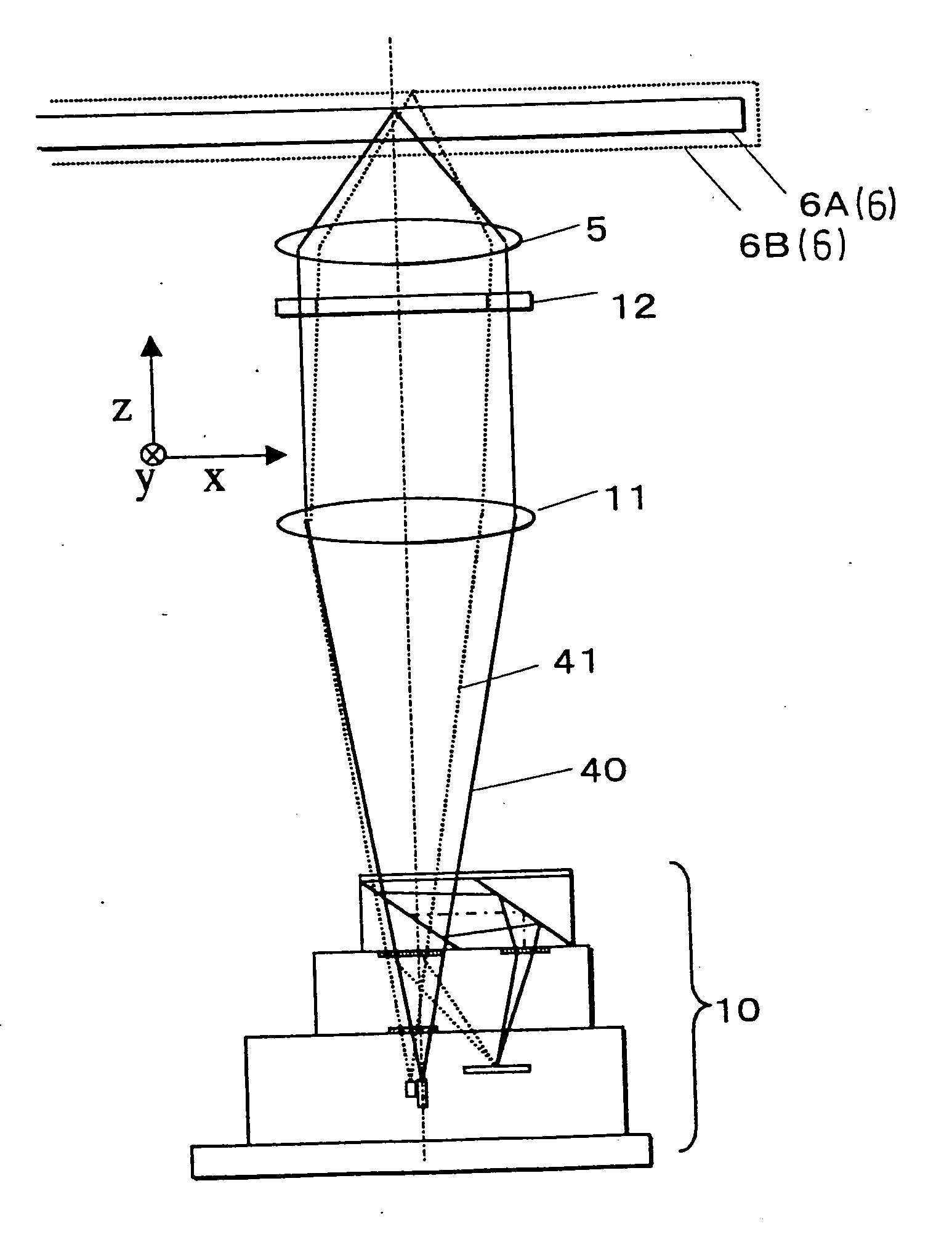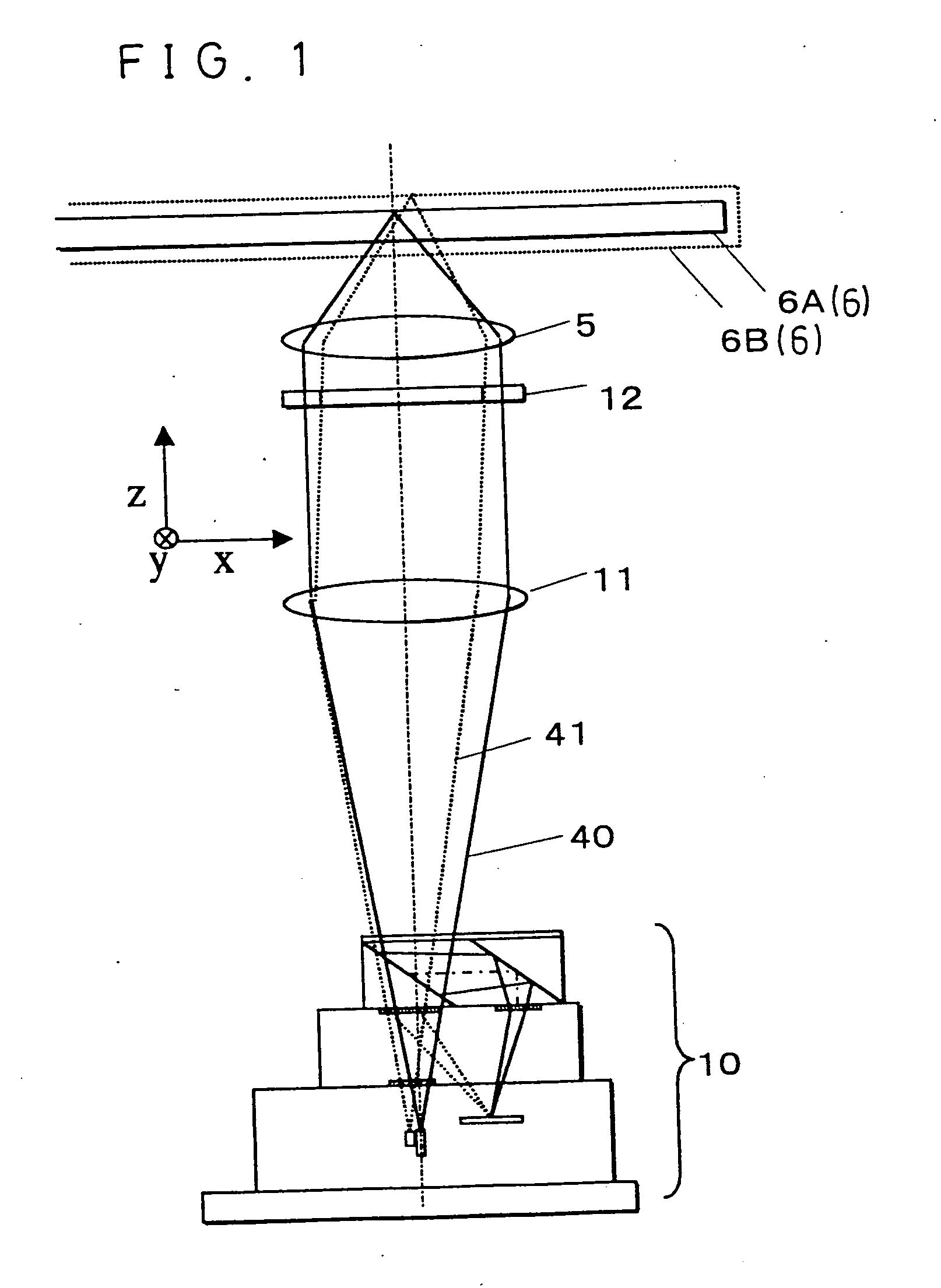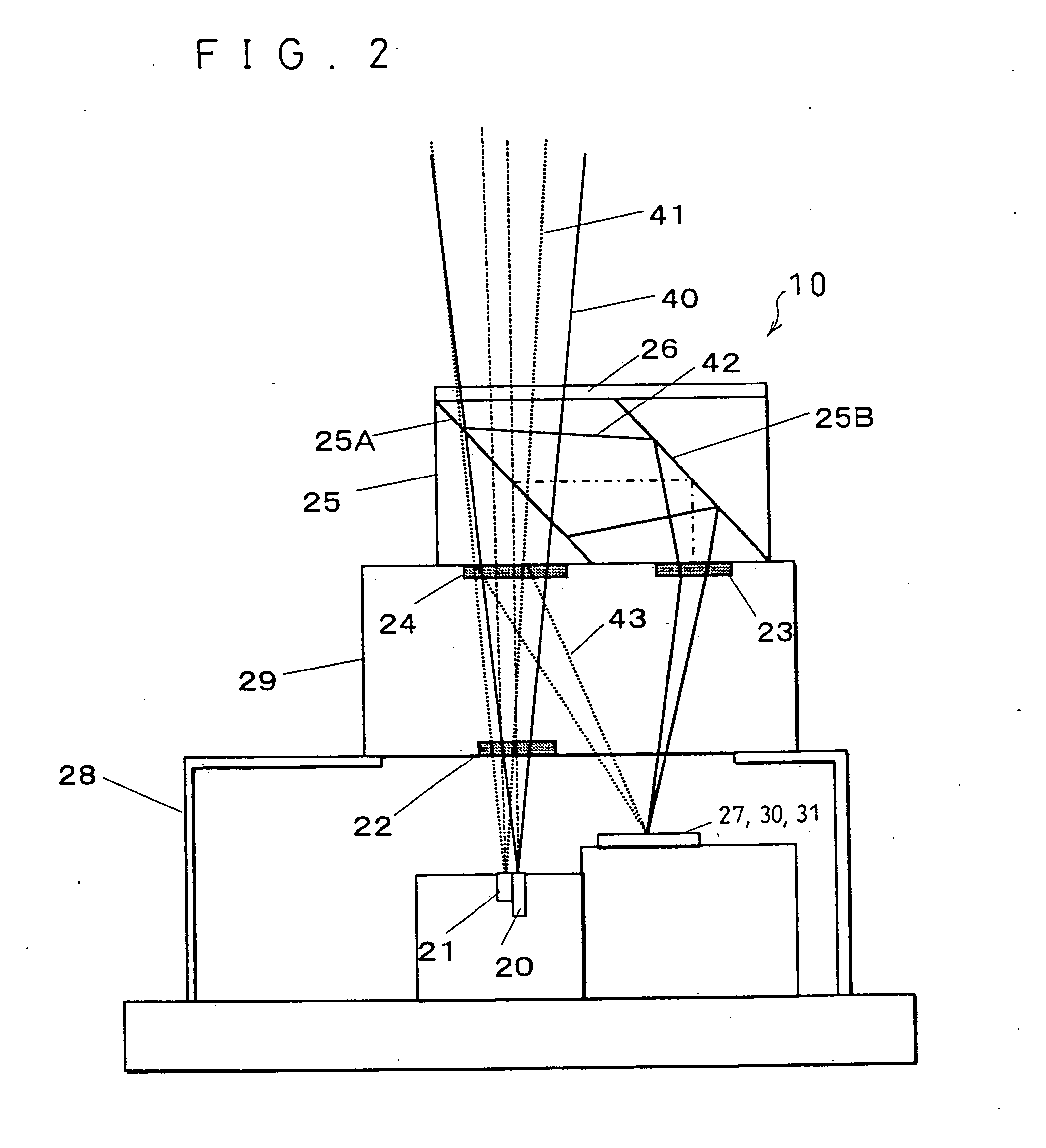Optical pickup
a technology of optical pickups and pickups, applied in the field of optical pickups, can solve the problems of increasing costs, inability to control the position and/or rotation, and ineffective optimum conditions, and achieve the effect of reducing integration and easy assembly control
- Summary
- Abstract
- Description
- Claims
- Application Information
AI Technical Summary
Benefits of technology
Problems solved by technology
Method used
Image
Examples
first embodiment
[0070] The following will explain in detail the present invention with reference to FIGS. 1 through 20. Note that, components identical with those shown in the conventional example above will be given the same reference symbols, and explanation thereof will be omitted here.
[0071]FIGS. 1 and 2 are schematic diagrams of an optical pickup according to the present embodiment. Light emitted from an integrated laser unit 10 is changed into parallel light at a collimator lens 11 and transmitted through a wavelength selecting aperture 12, thereafter being focused on an optical disk 6 by an objective lens 5. The reflection light from the optical disk 6 travels through same optical components as those of an outward travel so as to be focused on a photosensor 27 of the integrated laser unit 10.
[0072] Details of the integrated laser unit 10 will be discussed with reference to FIG. 2. The integrated laser unit 10 includes a first semiconductor laser 20 which starts oscillating when a wavelength...
second embodiment
[0209] Next, the following will explain details of another configuration according to the present invention, with reference to FIG. 23. Note that, the same portions as those of the above configuration of FIG. 21 will be given the same reference symbols, and explanation thereof will be omitted here.
[0210] In the integrated laser unit 10 of FIGS. 21 and 22, in the case of controlling the first and second hologram elements 23 and 24, the complex PBS 25 and the first hologram element 23 on the upper side are first controlled integrally. Thereafter, the second hologram element 24 on the lower side should be controlled while fixing the complex PBS 25 and the first hologram element 23 thus integrally controlled lest they should move. However, such control poses problems in terms of fabrication that devices such as controlling tools become complicated, and stricter accuracy is demanded. Therefore, a configuration to solve these problems will be described below.
[0211]FIG. 23 shows an integr...
PUM
| Property | Measurement | Unit |
|---|---|---|
| wavelength | aaaaa | aaaaa |
| wavelength | aaaaa | aaaaa |
| wavelength | aaaaa | aaaaa |
Abstract
Description
Claims
Application Information
 Login to View More
Login to View More - R&D
- Intellectual Property
- Life Sciences
- Materials
- Tech Scout
- Unparalleled Data Quality
- Higher Quality Content
- 60% Fewer Hallucinations
Browse by: Latest US Patents, China's latest patents, Technical Efficacy Thesaurus, Application Domain, Technology Topic, Popular Technical Reports.
© 2025 PatSnap. All rights reserved.Legal|Privacy policy|Modern Slavery Act Transparency Statement|Sitemap|About US| Contact US: help@patsnap.com



